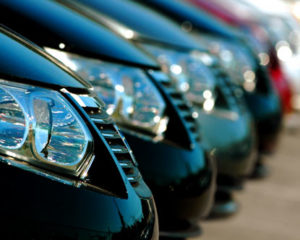Excellent welding & grinding benches online store UK
Welding table clamps online shopping UK 2025: Aluminum, being a non-ferrous metal, eliminates the risk of iron contamination when welding stainless steel components. It is generally a much more economical option for shops working exclusively with stainless or aluminum. It offers excellent corrosion resistance and will never, ever rust. It’s non-magnetic, which can be advantageous in certain welding applications. Aluminum has excellent thermal conductivity, which helps dissipate heat during welding and reduces the likelihood of distortion in the workpiece. Aluminum is a much softer material compared to steel, and is prone to scratches and dents from heavy usage. Tooling could also potentially put enough pressure on the surface to damage it since whatever is being welded is likely stronger than aluminum. It’s non-magnetic, which can be a disadvantage in certain welding applications. Aluminum welding tables will always be more expensive than carbon steel. For applications where a heavy table offers benefits, aluminum won’t provide the same level of stability. Aluminum tables are generally less common, potentially limiting options. Discover additional details on top welding tables.
The latest weld tables even come with adjustable legs, allowing welders to comfortably perform welding operations in sitting or standing positions. These tables are equipped with clamping systems and welding fixtures, providing excellent control during operation. Moreover, these welding tables prioritize operator safety, constructed from robust materials like steel to withstand the heat generated during welding processes. If you don’t wish to buy from a market, you can create a DIY welding table, personalized according to your requirements. The provision of multiple slots and holes enables you to quickly attach or detach the clamps to firmly hold the workpieces in different positions.
If you are using a messy weld process such as MIG or flux core, the closer the BB’s are to the surface, the hotter they are when they make contact. By elevating the work it allows critical air cooling which helps keep things from sticking. In fact, using this process combined with anti-spatter will prevent almost all BB’s from sticking, while also protecting the surface from rust. We’ve covered a lot of ground here, and there are many more variables than most people would expect. So it’s Ok if you’re feeling a little overwhelmed. Frankly, I’m shocked if you actually got to the end of this! Maybe drop a comment below if you actually read it. You can also drop a comment if you see an error or omission, feel like there was some bias, or just have other questions! Because if you’re left wondering something I guarantee other people are too. So let’s make sure we cover all the bases.
Heat Resistance – Welding tables are designed to withstand high temperatures. They won’t warp or degrade under the intense heat generated during welding, ensuring your work surface remains flat and level. Protection – They protect your work environment by containing sparks, slag, and hot metal, preventing them from damaging your floor, equipment, or other materials in your workspace. Workpiece Alignment – Welding tables can often accommodate various welding fixtures and clamps, allowing you to securely hold and align your workpiece, ensuring precise welds. In the video below we show you how a good clamp setup can ensure you get very accurate results on your welding jobs. Different Types of Welding Tables – Before we dive deeper into choosing the right welding table, it’s essential to understand that not all welding tables are created equal. There are various types available, each tailored to specific needs and preferences.
Choosing the Right Welding Table for Your Specific Projects – Selecting the ideal welding table isn’t just about finding the best table on the market; it’s about choosing the one that aligns perfectly with your specific welding techniques and projects. In this section, we’ll provide guidance on how to match the right welding table to your unique needs. Assess Your Typical Project Size – Consider the size and scale of the welding projects you frequently undertake: Small Projects – If you work on smaller, intricate projects, a portable or adjustable welding table may be suitable. These tables offer flexibility and can be tailored to your project’s size and requirements. Large Projects – For larger projects, a fixed or heavy-duty welding table with a spacious work surface and high weight capacity is essential to ensure stability and safety. Workshop Space and Mobility – Evaluate the available space in your workshop and your mobility requirements: If your workshop has limited space, consider a portable or space-efficient welding table that can be easily moved or folded when not in use.
Cast iron welding tables are significantly heavier due to the density of the material, which makes them much less portable and more challenging to relocate. If stainless steel is welded on a cast iron table, there’s a risk of iron particles transferring to the stainless, which compromises corrosion resistance and leads to rusting or discoloration. Cast iron commonly contains gas porosity or shrinkage cavities that form during the casting process. These pores or voids can weaken the structure of the welding table and affect its performance. They can also leave unattractive pockets on the surface. In countries like India, China and others cast iron is usually made from “mystery metals”. A quick search on YouTube will reveal some enlightening videos. Drilling, cutting, or welding modifications to a cast iron table can be difficult and may compromise its strength and integrity.
